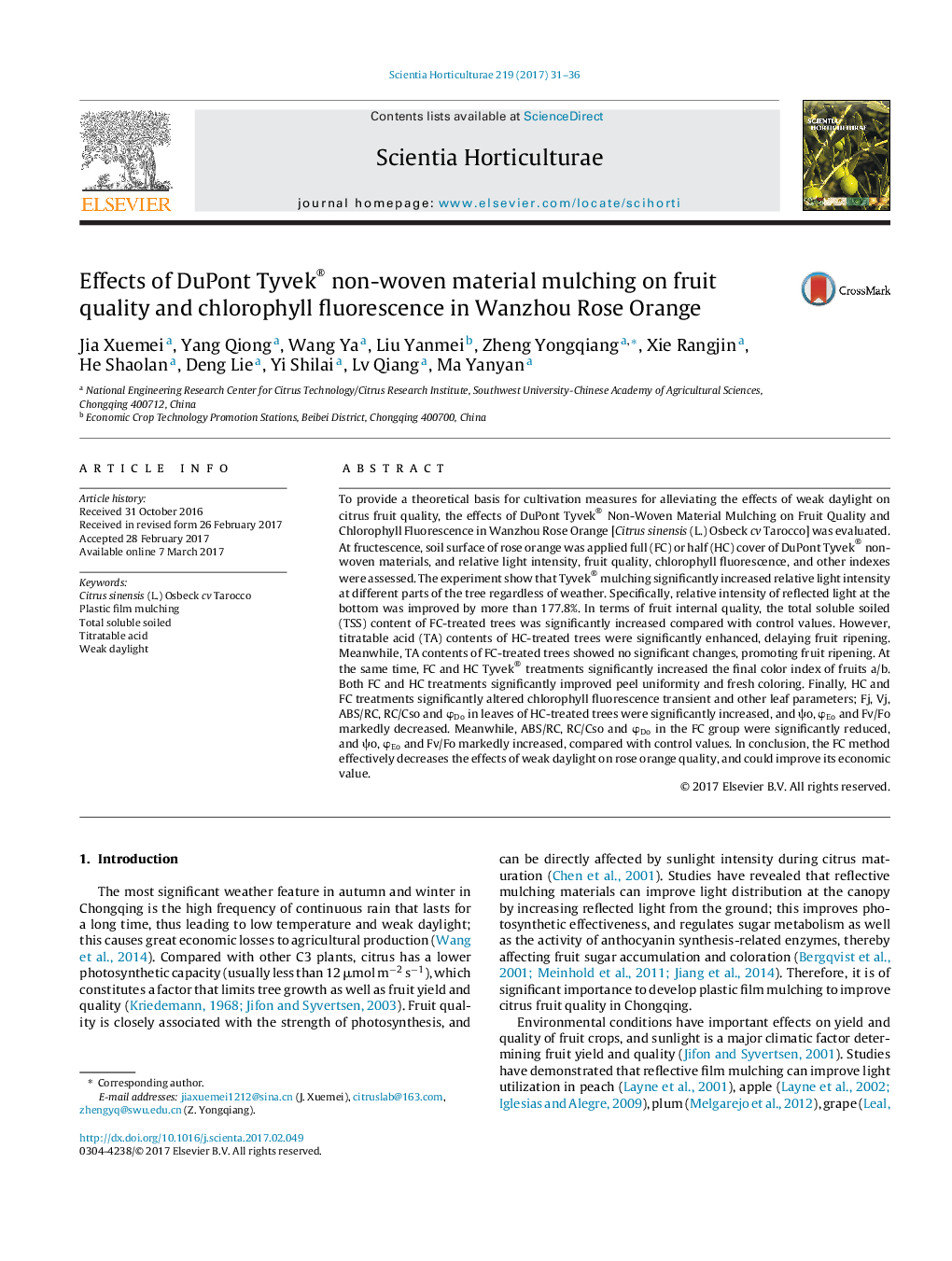| Article ID | Journal | Published Year | Pages | File Type |
|---|---|---|---|---|
| 5769708 | Scientia Horticulturae | 2017 | 6 Pages |
â¢Tyvek® mulching significantly increased relative light intensity at different tree parts regardless of weather.â¢Total soluble soiled (TSS) content in fruit of FC-treated trees was significantly increased.â¢HC-treated trees delayed fruit ripening due to Titratable acid (TA) content in fruit significantly enhanced.â¢FC and HC-treated trees significantly improved peel uniformity and fresh coloring.â¢FC and HC-treated trees significantly altered chlorophyll fluorescence transient and other leaf parameters.
To provide a theoretical basis for cultivation measures for alleviating the effects of weak daylight on citrus fruit quality, the effects of DuPont Tyvek® Non-Woven Material Mulching on Fruit Quality and Chlorophyll Fluorescence in Wanzhou Rose Orange [Citrus sinensis (L.) Osbeck cv Tarocco] was evaluated. At fructescence, soil surface of rose orange was applied full (FC) or half (HC) cover of DuPont Tyvek® non-woven materials, and relative light intensity, fruit quality, chlorophyll fluorescence, and other indexes were assessed. The experiment show that Tyvek® mulching significantly increased relative light intensity at different parts of the tree regardless of weather. Specifically, relative intensity of reflected light at the bottom was improved by more than 177.8%. In terms of fruit internal quality, the total soluble soiled (TSS) content of FC-treated trees was significantly increased compared with control values. However, titratable acid (TA) contents of HC-treated trees were significantly enhanced, delaying fruit ripening. Meanwhile, TA contents of FC-treated trees showed no significant changes, promoting fruit ripening. At the same time, FC and HC Tyvek® treatments significantly increased the final color index of fruits a/b. Both FC and HC treatments significantly improved peel uniformity and fresh coloring. Finally, HC and FC treatments significantly altered chlorophyll fluorescence transient and other leaf parameters; Fj, Vj, ABS/RC, RC/Cso and ÏDo in leaves of HC-treated trees were significantly increased, and Ïo, ÏEo and Fv/Fo markedly decreased. Meanwhile, ABS/RC, RC/Cso and ÏDo in the FC group were significantly reduced, and Ïo, ÏEo and Fv/Fo markedly increased, compared with control values. In conclusion, the FC method effectively decreases the effects of weak daylight on rose orange quality, and could improve its economic value.
